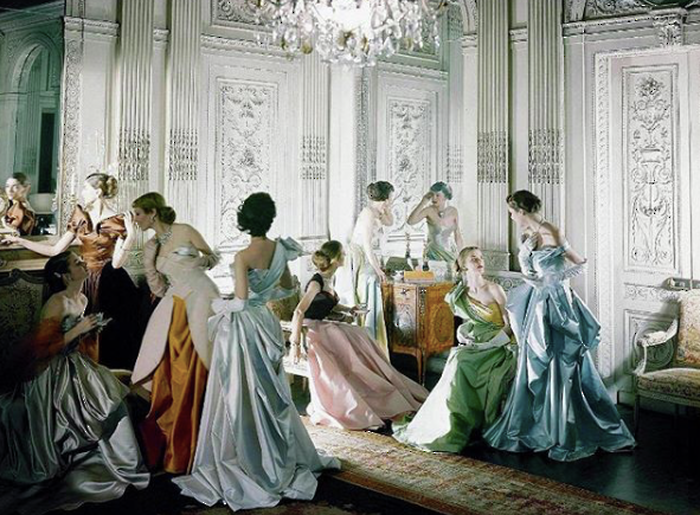Edward Enninful’s first issue shows a bold, new British Vogue
Going from whitewash to diversity, the new British Vogue impresses Vivienne Hopley-Jones
The first edition of British Vogue under the new editor-in-chief, Edward Enninful, is all class, without the hauteur. Forget ’This is England ’90’, because This is Britain 2017 (N.B. we should never forget ‘This is England’).
Enninful, a fashion stylist and contributing editor at a range of publications throughout his career, made his name as fashion director at i-D magazine, a position he earned at the age of 18. His stylistic approach is the perfect balance of street sophistication, which makes Enninful an exciting and potentially innovative choice as the editor-in-chief of the iconic magazine. With the capacity to create a modern and current British Vogue whilst preserving the publication’s history, class and style, the direction under Enninful has been widely anticipated.
“Shulman put the final nail in her own coffin with the mighty thwack of an elitist hammer in an agonising interview for the Guardian last week”
After 25 years in the hands of Alexandra Shulman, no one could have quite predicted the extent of the tumult and politics surrounding the transition. An article Shulman recently wrote has been vastly criticised for its racial implications. With her legacy at the publication under question both within and outside the fashion world, Shulman put the final nail in her own coffin with the mighty thwack of an elitist hammer in an agonising interview for the Guardian last week.
There is no other word to describe Shulman’s attitude to the lack of diversity that underpinned every aspect of British Vogue under her leadership than ‘nonchalant’. From her literally all-white team, the ‘Sloanie Club’, to the extreme inadequacy in ethnic and racial representation of models who made the cover, Shulman refuses to acknowledge, never mind apologise for, the unacceptable lack of diversity. This is especially notable when other publications, including British Vogue’s counterparts in America and beyond, have made efforts to increase diversity.
Shulman subscribes to extremely racialised descriptions: for instance, referring to Naomi Campbell as “vocal”, playing into the racial stereotype of black women as loud and aggressive. That someone in the creative industry sees such opinions as justified is alarming, considering Shulman has been leading perhaps the most influential publication in British fashion for the past 25 years.
In a contrast which could not be starker, Ghanaian-born Edward Enninful’s first British Vogue is a celebration of British culture and fashion in all of its multicultural glory. The perspective he seeks to highlight is only emphasised by the publicity surrounding his predecessor’s recent comments. Enninful features a range of voices and contributors from a variety of professions and industries, and a collection of ethnic backgrounds.
The issue, for me, is an embodiment of Britishness, which stands up in the face of the negativity and rhetoric many of us associate with our culture and history in the wake of the political and social tumult of recent years. From Salman Rushdie’s alternative Christmas and Zadie Smith’s exploration of the cultural figure of ‘Mrs. Windsor’ to the Delevingne sisters’ perspectives on what it means to be ‘British’, Enninful’s Vogue grounds itself in the unique, inclusive, multicultural, apologetic, and self-deprecatingly wonderful culture that is Britain.

There’s more to fashion photography than meets the eye
Enninful reflects a diverse Britain, yet one that is distinctly recognisable: a Britain of the NHS, the BBC, David Bowie, and “bloody hell”. The new Vogue is also the Vogue of creativity and fashion, from powerhouses such as Kate Moss and Naomi Campbell as contributing editors, to Julia Hobbs’ piece on the ‘future stars of London’s arts and fashion scenes’ in “Creatures of Change”. This is a Vogue which is celebrating the old and classic alongside the new and innovative. It is a Vogue which knows its history, yet is unafraid of change.
Who can say what exactly the future holds for British Vogue, other than it does at least have a future under Edward Enninful. This marks a beginning of the potential for a publication that can thrive, artistically and creatively, and hopefully mirror the chances of the diverse ‘Great Britain’ it showcases
 News / Downing investigates ‘mysterious’ underground burial vault 29 December 2025
News / Downing investigates ‘mysterious’ underground burial vault 29 December 2025 News / Unions protest handling of redundancies at Epidemiology Unit30 December 2025
News / Unions protest handling of redundancies at Epidemiology Unit30 December 2025 Lifestyle / Ask Auntie Alice29 December 2025
Lifestyle / Ask Auntie Alice29 December 2025 Features / ‘Treated like we’re incompetent’: ents officers on college micromanagement30 December 2025
Features / ‘Treated like we’re incompetent’: ents officers on college micromanagement30 December 2025 Science / Astronomical events to look out for over the break29 December 2025
Science / Astronomical events to look out for over the break29 December 2025










